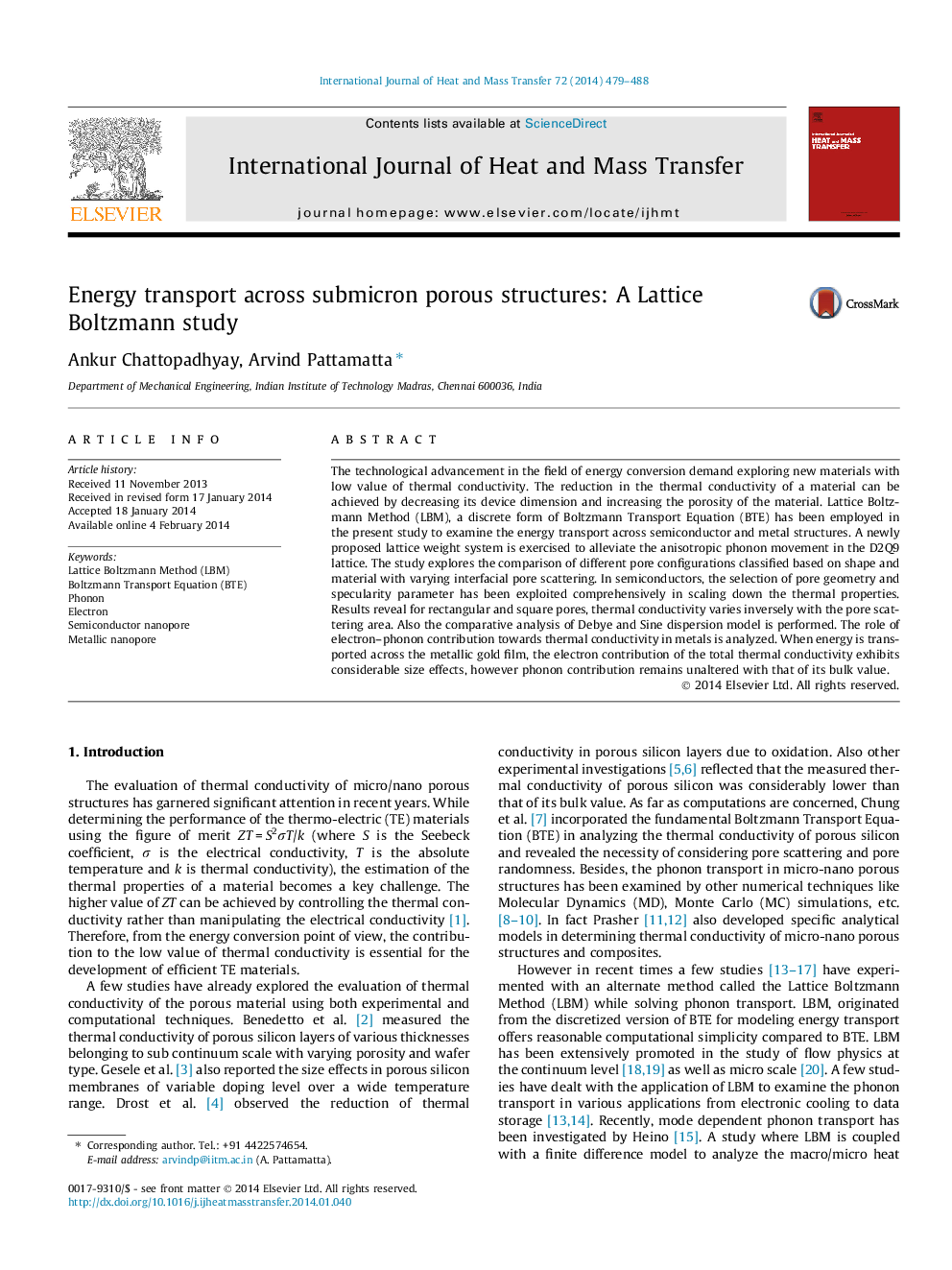| Article ID | Journal | Published Year | Pages | File Type |
|---|---|---|---|---|
| 7057316 | International Journal of Heat and Mass Transfer | 2014 | 10 Pages |
Abstract
The technological advancement in the field of energy conversion demand exploring new materials with low value of thermal conductivity. The reduction in the thermal conductivity of a material can be achieved by decreasing its device dimension and increasing the porosity of the material. Lattice Boltzmann Method (LBM), a discrete form of Boltzmann Transport Equation (BTE) has been employed in the present study to examine the energy transport across semiconductor and metal structures. A newly proposed lattice weight system is exercised to alleviate the anisotropic phonon movement in the D2Q9 lattice. The study explores the comparison of different pore configurations classified based on shape and material with varying interfacial pore scattering. In semiconductors, the selection of pore geometry and specularity parameter has been exploited comprehensively in scaling down the thermal properties. Results reveal for rectangular and square pores, thermal conductivity varies inversely with the pore scattering area. Also the comparative analysis of Debye and Sine dispersion model is performed. The role of electron-phonon contribution towards thermal conductivity in metals is analyzed. When energy is transported across the metallic gold film, the electron contribution of the total thermal conductivity exhibits considerable size effects, however phonon contribution remains unaltered with that of its bulk value.
Related Topics
Physical Sciences and Engineering
Chemical Engineering
Fluid Flow and Transfer Processes
Authors
Ankur Chattopadhyay, Arvind Pattamatta,
